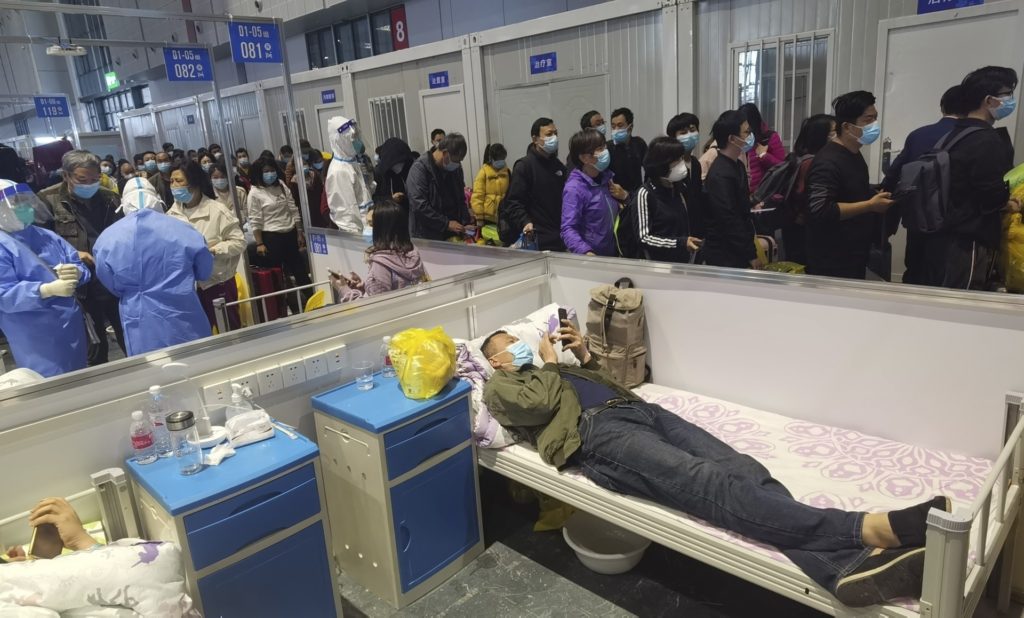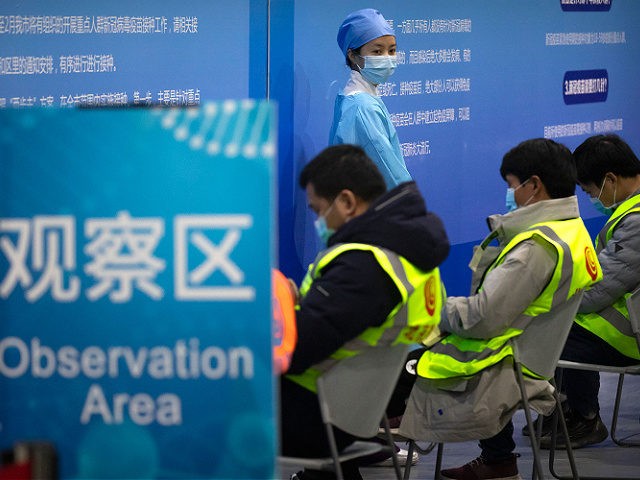China’s ruling Communist Party recently vowed to allocate additional resources toward its Chinese coronavirus “zero-tolerance” policy on Monday including plans to build “permanent quarantine facilities,” the South China Morning Post (SCMP) reported.
China’s National Health Commission (NHC) announced on May 16 that it will soon construct “permanent” quarantine sites for Chinese coronavirus patients and organize “dedicated teams” to conduct testing for the disease during potential future outbreaks. NHC chief Ma Xiaowei confirmed the plans in an article published by the Chinese Communist Party journal Qiushi on Monday, the SCMP relayed.
China’s government has frequently publicized efforts to construct temporary Chinese coronavirus quarantine centers during prior epidemics of the disease nationwide. These campaigns have included the repurposing of pre-existing buildings into makeshift medical clinics. Beijing, which is directly administered by China’s central government, opened one such makeshift hospital on May 1 to accommodate roughly one dozen Chinese coronavirus patients during the city’s latest (and ongoing) epidemic of the disease. The medical facility’s opening was, in fact, a reopening after it was originally used to treat “SARS patients in 2003 and also used for treating local COVID-19 [Chinese coronavirus] patients in early 2020,” China’s state-run Global Times noted at the time.

People who have been negative in the last two nucleic acid tests line up to leave a temporary hospital converted from the National Exhibition and Convention Center to quarantine COVID-positive people in Shanghai, China on April 18, 2022. (Chinatopix via AP)
Li Ang, a spokesperson for Beijing’s epidemic control center, told reporters on April 30 that the city had “already built makeshift hospitals with a capacity of 4,000 beds” as of that date. Li said Beijing was additionally working to convert “some large scale venues into makeshift hospitals, while several districts [were] also conducting work to select potential makeshift hospital sites.”
Beijing’s latest Chinese coronavirus epidemic began around April 22. It followed another outbreak of the disease in Shanghai, China’s financial hub and most populous city, which caused a total lockdown of the metropolis on April 5.
NHC chief Ma Xiaowei praised his commission for its alleged “progress” in curbing Shanghai’s epidemic on May 16. He said the city had “withstood the most severe challenge since Wuhan” thanks to the Communist Party’s “zero tolerance” policy toward the virus, which has seen all of Shanghai’s 25 million-plus residents sealed inside their homes for 42 consecutive days as of press time on May 17.
Shanghai’s lockdown will reportedly begin to ease starting June 1. Ma on May 16 compared Shanghai’s ongoing movement restrictions to those enforced in central China’s Wuhan city in early 2020. Wuhan, which was the origin site of the Chinese coronavirus in late 2019, imposed a 76-day lockdown on all of its 11 million-plus residents from January 23 to April 8, 2020, to fight the world’s first major outbreak of the disease.

COMMENTS
Please let us know if you're having issues with commenting.